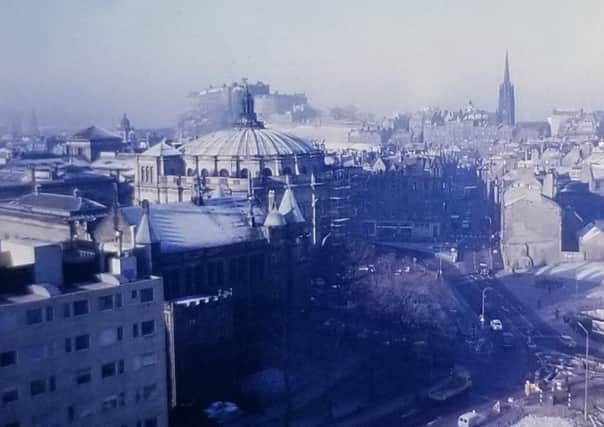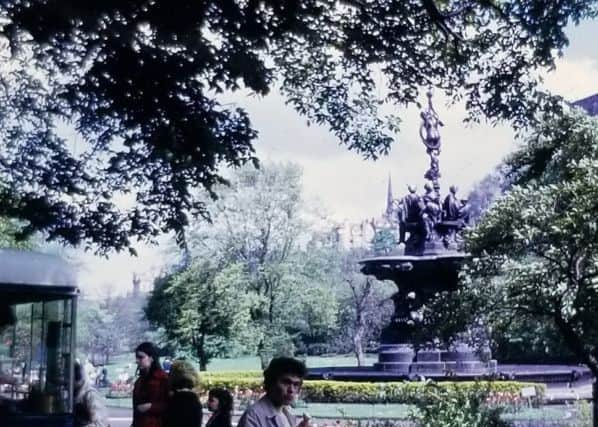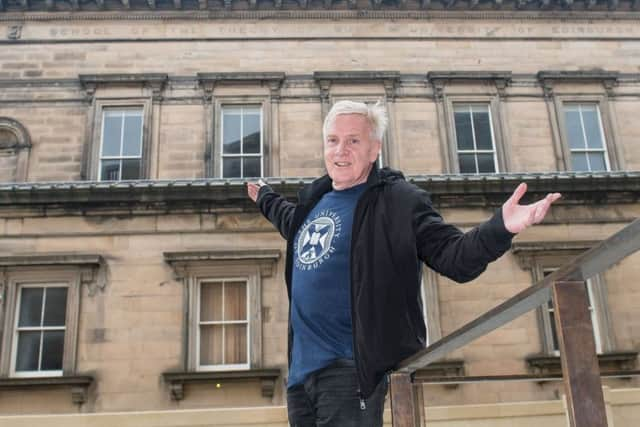Lost Edinburgh: American who came to study in 1970s share photos almost 50 years on


Though not without its charms, the Auld Reekie that greeted floppy-haired, American music student John Sievers as he emerged wide-eyed from Waverley Station in September 1971 was much less cosmopolitan and affluent; more provincial, soot-ridden and austere.
The photographs he took during his year-long stay captured the Capital in Kodachrome in an era when monochrome prevailed.
Advertisement
Hide AdAdvertisement
Hide AdNow, after nearly half a century, Mr Sievers, 65, has returned to retrace the footsteps of his youth.
Hailing from the city of Bellflower, just north of Long Beach, California, he first came to Scotland as an exchange student. It was his first time abroad.
“I can remember riding along in the train up from London and I could barely understand some of these Scotsmen,” recalls Mr Sievers, “Their brogues were very thick and it was pretty difficult to cut through to get to the English underneath.”
Fascinated by his new home, its people and distinctive architecture, the 19-year-old began hungrily snapping away with his little colour camera.
The young American would have thought little of it at the time, but he was unwittingly creating an invaluable visual record of Edinburgh in the glam rock era.


For many Scots in 1971, colour film was still a novelty; something you squirrelled away for special occasions - not for wasting on buildings.
But as a visitor, Mr Sievers had no need to be so frugal; these buildings deserved a Kodak moment of their own.
“To see all of these solidly-built, ancient buildings made out of stone that were meant to last centuries was really quite an amazing experience.”
Advertisement
Hide AdAdvertisement
Hide AdA great deal of Mr Sievers’ photos capture the places he most frequently visited. The university district features prominently, which to any Edinburgher is utterly fascinating as the changes between then and now are stark.


Alison House on Nicolson Square and the Reid Concert Hall next to McEwan Hall, the places Mr Sievers studied and performed, both make an appearance, and shots from the upper floors of the Appleton Tower show bird’s-eye views across the city. It is rather fun figuring out what is still standing and what has long been flattened.
Mr Sievers shared a humble tenement flat at Mayfield Road. His photos show the courtyard between the tenements and his local newsagent, Kibbys, whose proprietor he recalls with fondness.
“I adored her; she treated me like a god,” said Mr Sievers.
But a wry smile appears on his face as he recalls some of the lesser aspects of 1970s student life.


“People were still burning coal. I found that a real novelty. No-one burned coal in Los Angeles.
“And the lack of refrigerator at the apartment... That was unheard of where I came from.
“That winter, I paid good money for this steak and left it out on the window sill. When I came back in the morning a crow had got to it.”
Advertisement
Hide AdAdvertisement
Hide AdWinter 1971 was indeed a cold one and, being from California, Mr Sievers was mesmerised by the glistening, white blanket that covered the city centre and documented it thoroughly.
Naturally, there are plenty shots of central Edinburgh, although one stands out from the rest. Looking east from the Scott Monument, it shows three triffid-like cranes busy building the St James Centre.
I smirk as I explain to John that his long-awaited return has seen this particular site come full circle - it’s currently in the process of being demolished.


Our conversation then takes a more personal detour, as Mr Sievers divulges his sexuality and how Edinburgh allowed him to explore it. Choice of venue, however, was limited. “At that time there was really only one gay bar and that was The Kenilworth on Rose Street,” he said.
It is safe to say Edinburgh holds a special place in Mr Sievers’s heart. “I’ve travelled a lot in my life, but this is my favourite city, without a doubt. The warmth and the generosity and the kindness of the people, I just find the Scots to be so wonderful.”
Rather poignantly, his return to Edinburgh coincides with Edinburgh University’s Freshers Week. Earlier, just prior to our interview, he had ventured down to the newly-redeveloped Bristo Square.
“It was just incredibly sentimental for me because there was a long line of students, all lined up to go to some function or other and I could tell they were all really young and I said to myself: ‘Y’know, I was probably standing in a line exactly like that 46 years ago’.”
John Sievers currently lives in a house in the Hollywood Hills, where he runs two successful underwear businesses, International Jock and Largo Drive.
This week’s trip is his first back to Edinburgh since a 48-hour flying visit in 1989.